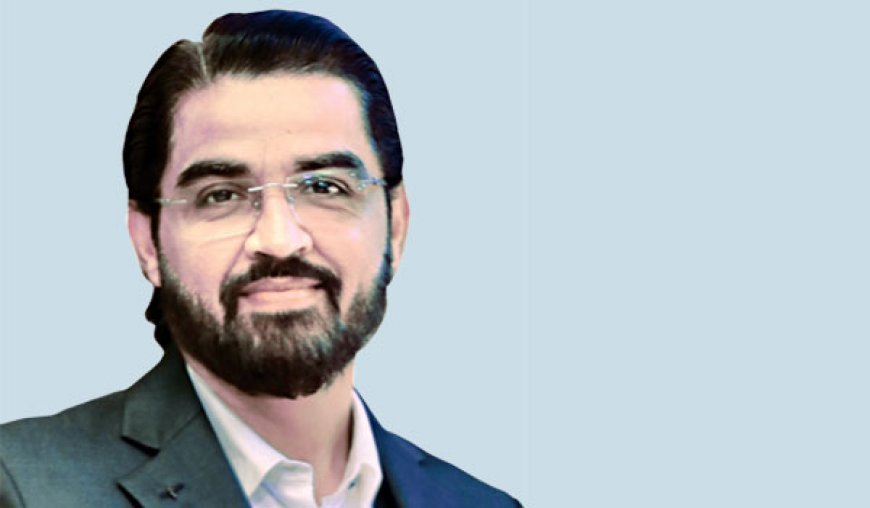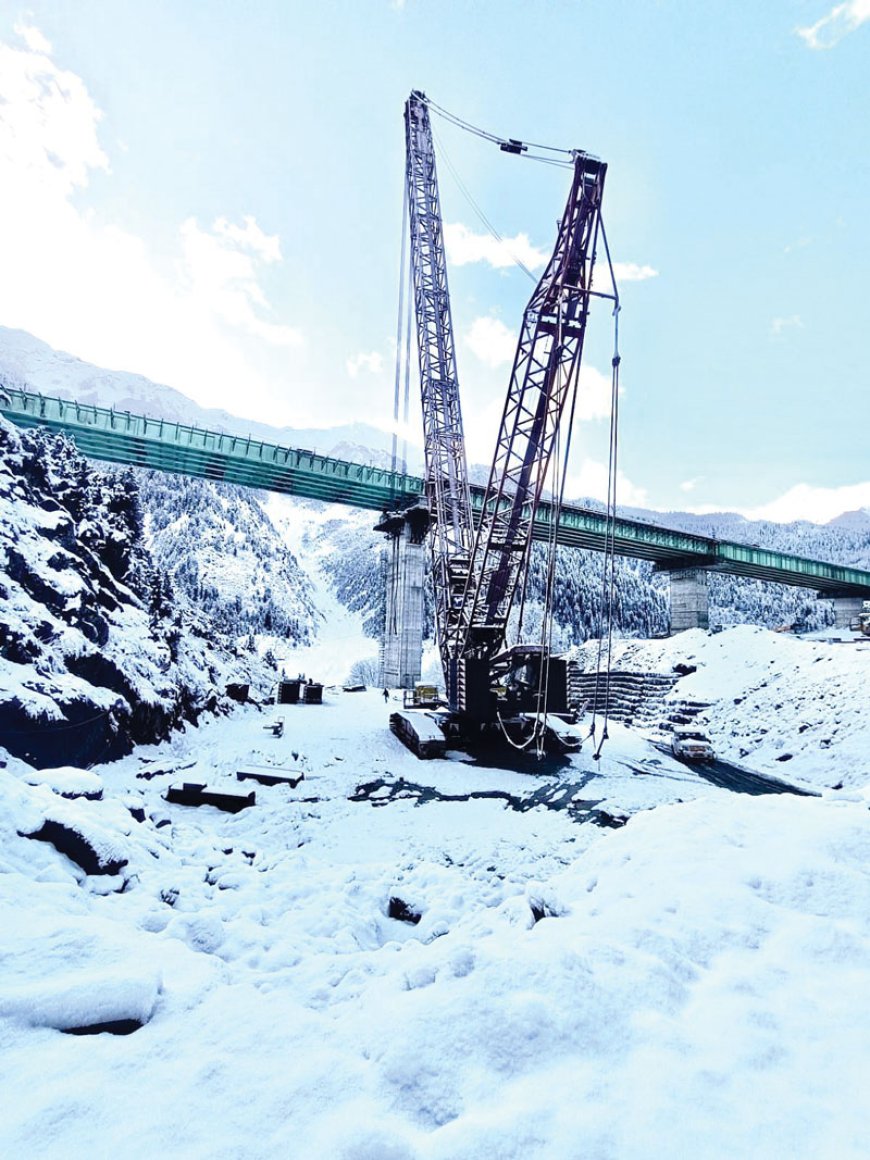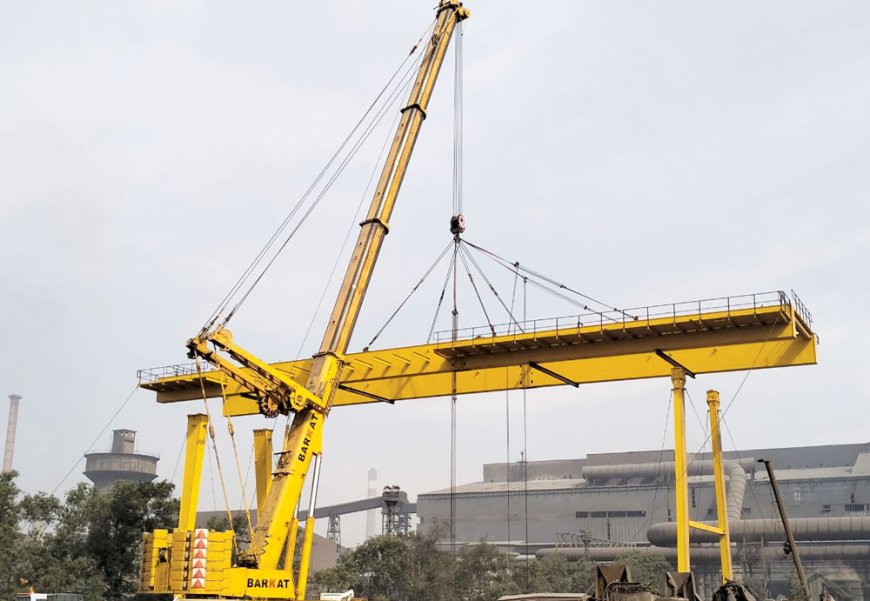Barkat Cranes distinguishes itself from competitors through our versatile equipment offerings.

What types of construction equipment do you specialize in?
What specific services do you offer besides rentals?
Our primary service is crane rental, which constitutes about 90% of our operations. This includes both telescopic and crawler cranes. Additionally, we offer forklift rentals, which make up about 10% of our services. Recently, we’ve expanded to provide larger forklifts on long-term rentals to industries outside the port, with around 20 to 35 forklifts currently in use. These larger forklifts are comparable in terms of rental value to our cranes. We have clients, such as steel companies, that require both cranes for project work and forklifts to handle steel coils or plates, allowing us to offer an integrated service.

What is your fleet strength?
Our fleet includes over 100 cranes. Historically, Barkat provided cranes ranging from 50 tons to 700-800 tons, including both crawler and telescopic types. We are unique in India for having a fleet that includes both kinds of cranes.
How do you view the current market scenario for equipment?
Over the next ten years, the outlook is robust; all major projects have been allocated, and there’s no downturn in sight. Infrastructure is the backbone of growth. India now has the second-largest network of roads globally, underscoring the need for steel, cement, oil, and gas to sustain this growth. A booming infrastructure sector means thriving ancillary sectors. Infrastructure is a significant driver for our business, particularly in providing cranes and material handling equipment for various projects. Numerous steel plants, like Tata Steel and JSW Steel, are undergoing significant expansions, necessitating our services. The cement industry is also expanding, with Adani taking over ACC embarking on substantial growth. These industries rely on our equipment and expertise.
Additionally, the Indian government’s 2030 vision plan emphasizes going green, spurring growth in solar and wind energy sectors that require substantial crane and equipment use. We have secured a five-year order from Adani for five packages. Although we are not listed and cannot disclose the exact order value, we are seeing significant demand for large refineries and equipment. Barkat has partnered with two industry leaders to form a new company, investing in cranes ranging from 1,200 to 1,700 tons. This new vertical focuses on oil and gas and super heavy lift erections, including blast furnaces in oil and steel sectors.

How is Barkat Cranes different from its competitors?
Barkat Cranes distinguishes itself from competitors through our versatile equipment offerings. Whether a customer requires a telescopic, crawler, or specialized crane like those from German or Chinese manufacturers, Barkat Cranes ensures all needs are met. We focus solely on cranes now, having previously explored other equipment types. Our fleet is predominantly new, aged between 5 to 10 years, which assures customers of reliability and modern technology.
Unlike many competitors who struggle with supply and demand, we stand out by offering comprehensive solutions and flexibility. Whether a customer needs a crane for a day or a year, we accommodate their requirements with prompt service and dependable machinery. Our operational and maintenance teams are highly skilled, ensuring minimal downtime and optimal performance of our equipment. We prioritize customer satisfaction and strive to minimize disruptions, knowing that downtime can impact both project timelines and our reputation in the market.
What are the emerging technologies in rental space?
Emerging technologies in the rental industry are revolutionizing operations, particularly in crane rentals. Traditionally, a 100-ton crane with a 40 to 45-meter boom was standard. However, advancements have led to cranes now offering a 60-meter boom, sometimes even 80 meters, while still maintaining the 100-ton capacity. This eliminates the need for higher capacity cranes just for increased boom length, thereby reducing costs. Moreover, modern cranes are equipped with state-of-the-art technology. GPS tracking and fuel sensors have been integrated, allowing operators to monitor machine location and diesel consumption remotely. This real-time data helps optimize operations and prevent pilferage, significantly enhancing efficiency and cost-effectiveness.
Overall, these technological advancements are transforming the rental industry by offering higher performance, improved monitoring capabilities, and reduced operational costs.

How do you approach machine maintenance?
As I mentioned earlier, all our cranes are new and under warranty with the original equipment manufacturer (OEM). We have experienced technicians who previously worked with the OEM, and we’ve hired them to ensure proper maintenance. These technicians are deployed in the field to maximize machine uptime, efficiently utilizing saved time.
We prefer to order directly from the OEM for crane parts, as well as from Michelin for tires and specific wire manufacturers. This direct approach eliminates middlemen, ensuring lower costs and authentic products. By bypassing channel partners or dealers, we avoid added margins, thus obtaining high-quality products at competitive prices.
Where do you envision Barkat Cranes in five years?
Back in 2016 when I started with Barkat, it was a company with a turnover of Rs. 55 crores annually. Now, after 8 years of dedicated effort, Barkat has grown to a turnover of Rs. 175 crores. This growth can be attributed to our excellent products, effective PR strategies, strong networking, and more. Previously ranked 78th internationally among rental companies, we have climbed to 52nd position this year, marking a significant achievement.
Looking ahead, we have ambitious plans in place, although details cannot be disclosed at this time. However, we are committed to further enhancing our presence and proving ourselves in the industry.








